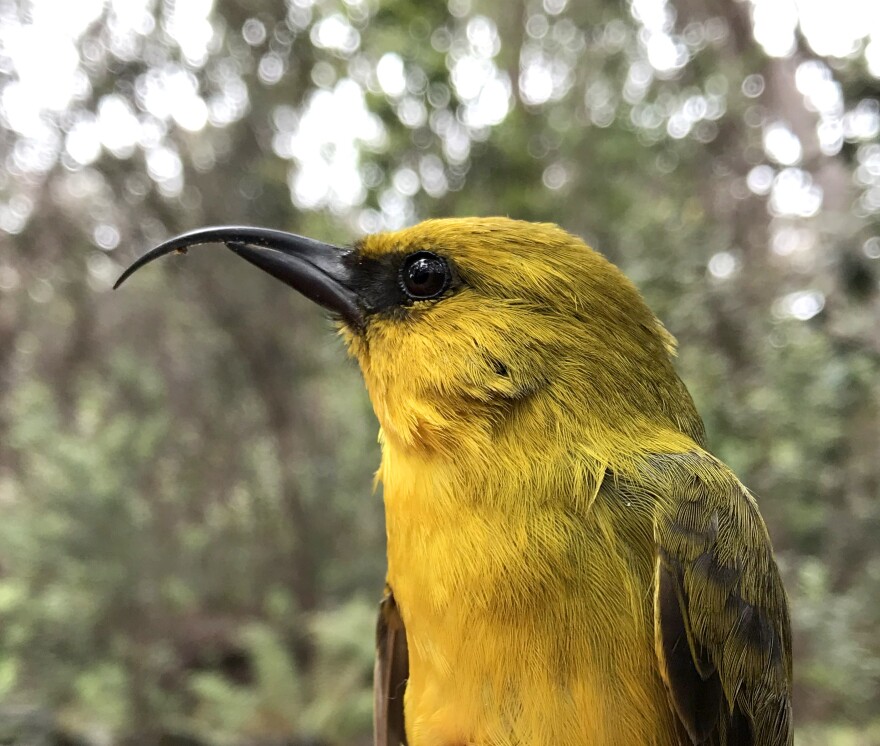ʻAkiapōlāʻau get the most buzz about their beak, which is uniquely adapted to their insectivore diet.
First, they use their strong lower bill to peck holes in tree branches. Then, they use their decurved upper bill to forage for insects and larvae within the branch. If you happen upon this "Hawaiian woodpecker" at lunchtime, you might hear the tap-tap-tap sound of their beaks pecking at the trees as they hunt for food.

ʻAkiapōlāʻau are endemic to Hawaiʻi island, where they were relatively abundant until the mid-20th century. Since the late '90s, the species has been declining, with a distinct population on the slopes of Maunakea disappearing entirely.
The International Union for the Conservation of Nature currently lists the ʻakiapōlāʻau as endangered, and estimates that only 800 mature birds remain.
ʻAkiapōlāʻau are particularly doting parents, and mates generally raise only one fledgling a year. Their low reproductive rate makes it difficult to withstand the combined threats of habitat loss, predation, and avian malaria.
The nukupu‘u, the closest relative of the ʻakiapōlāʻau and once found on Kauaʻi, Oʻahu and Maui, is presumed to be extinct.




